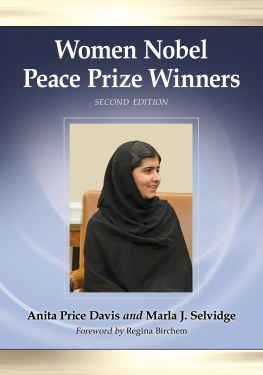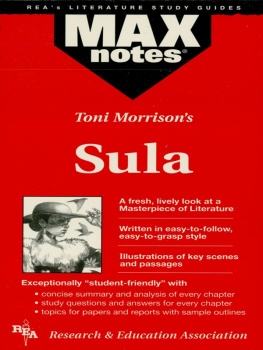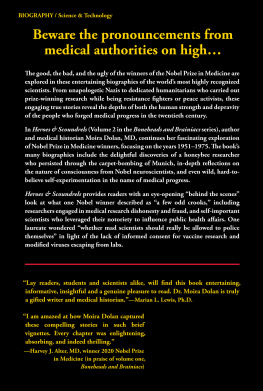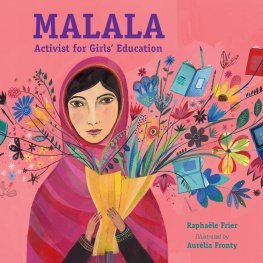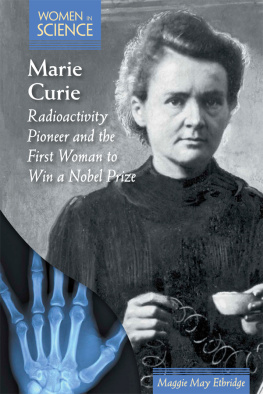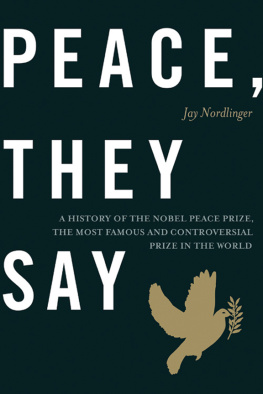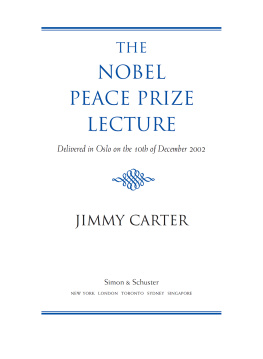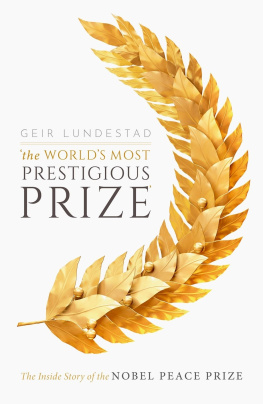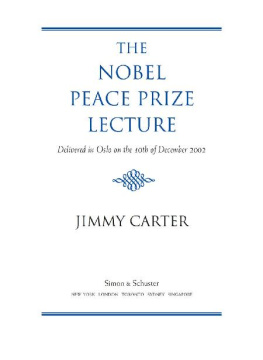
Women Nobel Peace Prize Winners
Second Edition
Anita Price Davis and Marla J. Selvidge

McFarland & Company, Inc., Publishers
Jefferson, North Carolina
Also of Interest and from McFarland
New Deal Art in Alabama: The Murals, Sculptures and Other Works,and Their Creators by Anita Price Davis and Jimmy S. Emerson (2015); North Carolina and World War II: A Documentary Portrait by Anita Price Davis (2015); The Margaret Mitchell Encyclopedia by Anita Price Davis (2013); New Deal Art in North Carolina: The Murals,Sculptures, Reliefs, Paintings, Oils and Frescoes and Their Creators by Anita Price Davis (2009); New Deal Art in Virginia: The Oils, Murals,Reliefs and Frescoes and Their Creators by Anita Price Davis (2009); Georgia During the Great Depression: A Documentary Portrait of aDecade compiled by Anita Price Davis (2008); Women on UnitedStates Postage Stamps by Anita Price Davis and Louise Hunt (2008); North Carolina During the Great Depression: A DocumentaryPortrait of a Decade compiled by Anita Price Davis (2003).
LIBRARY OF CONGRESS CATALOGUING DATA ARE AVAILABLE
BRITISH LIBRARY CATALOGUING DATA ARE AVAILABLE
e-ISBN: 978-1-4766-2212-5
2016 Anita Price Davis and Marla J. Selvidge. All rights reserved
No part of this book may be reproduced or transmitted in any form or by any means, electronic or mechanical, including photocopying or recording, or by any information storage and retrieval system, without permission in writing from the publisher.
Front cover: Malala Yousafzai during a 2013 visit to the Oval Office (White House photograph)
McFarland & Company, Inc., Publishers
Box 611, Jefferson, North Carolina 28640
www.mcfarlandpub.com
To Anita Price Daviss first peacemaker, her mother,
Nell Daves Price Burns,
and to
the rock and roller friend of Marla J. Selvidge,
Igor Yusov, a citizen of the world who
breaks down barriers with his music.
Both have brought peace into the authors lives.
Acknowledgments
(Marla J. Selvidge)
Many thanks from Anita Price Davis to Annika Ekdah, Public Relations Manager of the Nobel Foundation in Stockholm; Annika has been an indispensable consultant and participant in the project. Jonna Petterson is a kind, knowledgeable source of encouragement and help. Regina Birchem, International President of Womens International League for Peace and Freedom, has given us her valuable time in reading the manuscript and her expertise in writing the foreword. We are extremely grateful. Anita also wishes to thank Dell Morgan, Mark Collier, Becky Poole and Wade Woodward for their friendship and reference help with the project. As always, Anita acknowledges her church and her familyBuren (her husband of 52 years), Robbie and Stacey (her loving attorney son and beautiful attorney daughter-in-law), her teenage grandson Evan, and her granddaughter Ellie (age six)who listen, love and look past the flaws in their very human family member.
Anita has authored at least 100 books and I am honored that I, Marla J. Selvidge, was privileged to work with her on this project over the years. Anita came to me with the idea for the book, and the research has enhanced my understanding of world and local conflict, as well as an appreciation for peace efforts around the globe. Studying the lives of these brave and dedicated women often brought tears to my eyes. When Wangari wrote, I have lost a friend called a husband, I could barely contain myself. So many of the women had to give up their own personal lives for the sake of others. They endure (and fight) against almost insurmountable odds. Who would have believed that Aung San Suu Kyi, another who gave up her family, would be the leader of the dominate party in Myanmar/Burma? She is lucky to be alive. Discovering these women made me even more determined as a professor of religious studies to seek and teach peace. Thank you, Anita.
Foreword
by Regina Birchem
Thank you for letting me fly and achieve my goals.
Malala Yousafzais words to her father.
Between the years of 1901 and 2014, ninety-five Nobel Peace Prize Awards were presented to 103 individuals and 25 organizations. Of the 103 individuals, 16 are women. Of course, women are at the heart of the organizations and agencies given Nobel Awards; these agencies and organizations include the International Red Cross, Doctors Without Borders, The International Peace Bureau, The Quakers, UNICEF, and others.
The youngest Nobel laureate ever is 17-year-old Malala Yousafzai of Pakistan. She shared the award in 2014 with Kailash Satyarthi of India for their struggle against the suppression of children and young people and for the right of all children to education. To millions of young people around the worldespecially the women and children of PakistanMalala is a source of inspiration, hope and courage. For all of us, the Nobel Peace Prize expands our vision and increases our focus on the future, on the value of children and youth, on the importance of education and literacy, and on the health of the planet.
In 2011 three other women earned the international spotlight for their non-violent struggle for the safety of women and for womens rights to full participation in peace-building work. Ellen Johnson Sirleaf, the first woman president of Liberia; Leymah Gbowee, Liberian peace activist; and Tawakkol Karman, Yemenese journalist, human rights activist, and politicianwere brought into the international spotlight for their non-violent struggle for thesafety of women and for womens rights to full participation in peace-building work.
Anita Price Davis and Marla J. Selvidge, the authors of Women Nobel Peace Prize Winners, skillfully reveal for us the complex personalities and courage expressed in the diverse, inspiring ways of the sixteen women who have received the Nobel Peace Prize to date. As historians and writers, these two authors themselves engage in a kind of peace work.
Of the hundreds of peace prizes awarded annually, the Nobel Peace Prize is the highest honor. The award calls attention globally to the longing and necessity for human beings to find the path of peaceful and just coexistence; it honors those who put aside fear, discouragement, personal risks, and dangers to commit their lives to achieving that goal. One is tempted to remark that among all the Nobel Peace Prize Laureates, the sixteen women Nobel Peace Prize Laureates are notably consistent in struggling toward the goal of peacethough sometimes they also have their critics.
As we have learned from recorded history, from oral traditions, and from personal experience, women in many cultures have found ways to work together to resolve conflicts. Many women continue to risk their lives for peace and for an end to war. They organize in their communities, across national boundaries, and despite political, religious and ethnic barriers. Enemies use the shocking humiliation, rape, disfigurement, and dislocation of women as weapons of war; an example was the shocking bullet to the head of Malala Yousafzai, a child on her way to school.
To meet and know some of these countless women has been a remarkable experience of my life. I first experienced this when I was a young woman living in an international community. Later in life, I was a member of the Womens International League for Peace and Freedom (WILPF), an organization spanning borders, uniting women of peaceful and warring nations, and working to remove barriers to permanent and lasting peace. It was foundedor its vision was bornnine months after the outbreak of World War I during a time when the world was hypnotized in blood (
Next page
